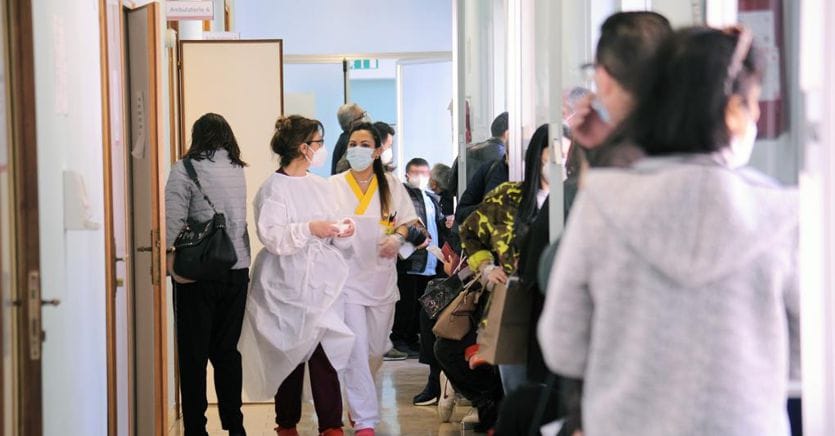Last year over 4 million Italians – 7% of the population – gave up the treatment they needed. A figure that is certainly better than in 2020 and 2021 when Covid effectively slowed down treatment (the renunciation at the time concerned 9.6% and 11.1% of the population), but we are still far from 6.3% of the pre-Covid phase when over 3.5 million Italians had given up knocking on hospitals and clinics for health services. With an aggravating circumstance: for the first time the first reason to hold back Italians more than economic reasons are the waiting lists on which the Government and the Regions in the recent past (and even today) have promised their maximum commitment.
Waiting lists are the first barrier to entry
«In the comparison between 2022 and the previous years of the pandemic, an unequivocal barrier to access emerges consisting of long waiting lists, which in 2022 becomes the most frequent reason (4.2% of the population), in the face of a reduction in the share of those who give up for economic reasons (it was 4.9% in 2019 and drops to 3.2% in 2022),” warns Istat in a recent hearing in the Senate held by Cristina Freguja, Director of the Central Directorate for Social Statistics and Welfare, during which the updated data of the «Aspects of daily life» survey were illustrated, where the estimate of the renunciation of health services refers to the total population in need of visits specialist (except for dentistry) or diagnostic tests and has declared that he has given up due to economic problems or difficulty in accessing services. Furthermore, in 2022 the proportion of people who underwent specialist visits decreased (from 42.3% in 2019 to 38.8% in 2022) as did diagnostic tests (from 35.7% to 32.0%), with highest peaks in the South (here the reduction reaches 5 percentage points).
Braking concerns everyone, without distinction between North and South
The decline concerns all age groups, but is greater in the elderly with reductions of 6 points for women. In short, “contrary to what would have been desirable – underlines Istat – it does not therefore seem that in 2022 we have managed to recover the pre-pandemic levels of health services”. this time the so-called “territorial gradient” does not weigh on health services as in the past, which saw fewer renunciations in the North: a difference, this, which “was canceled starting from the year of the pandemic and this continues to happen also in 2022, despite the decline in cancellations due to Covid-19”. Not only that: “Even social inequalities in the waiver of benefits show, after Covid, smaller differentials” and therefore also “the wealthier groups therefore seem to have had to renounce health services to a greater extent than in the years preceding the pandemic”. These two spies confirm that the most urgent problem now is the difficulty of accessing treatment due to waiting lists.
Spending on citizens is growing, now worth 25%
This is further confirmed by the greater use of the so-called out of pocket – health care expenses paid out of pocket by citizens – or at expenses guaranteed by insurance coverage. Last year, compared to 2019, the share of people declaring that they paid entirely at their own expense both for specialist visits (from 37% to 41.8% in 2022) and for diagnostic tests (from 23% to 27 .6% in 2022). The use of insurance coverage in 2022 concerns a share of just over 5% of people who declared having carried out visits or checks in the previous 12 months. The large numbers also show that spending is shifting (see also the graphs on the page): in 2021, private healthcare has bypassed the 37 billion threshold (+ 20%) reaching levels never seen before the pandemic. Added to these are the 4.5 billion of supplementary healthcare, always paid for by citizens. While public spending – after having skyrocketed due to the costs related to Covid, rising to 7.4% of GDP in 2021 and 7.2% in 2021 – is falling rapidly and stands at 6.3% this year, with no more rise in the next two years. Thus decreeing a new “historic” passage: by now 25% of health expenditure is borne by citizens, as if to say one euro out of four is paid by Italians from their own pockets.
